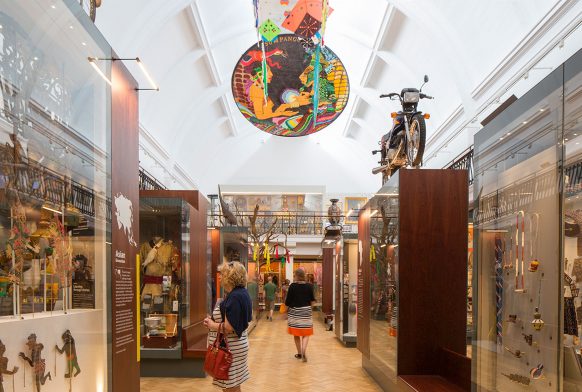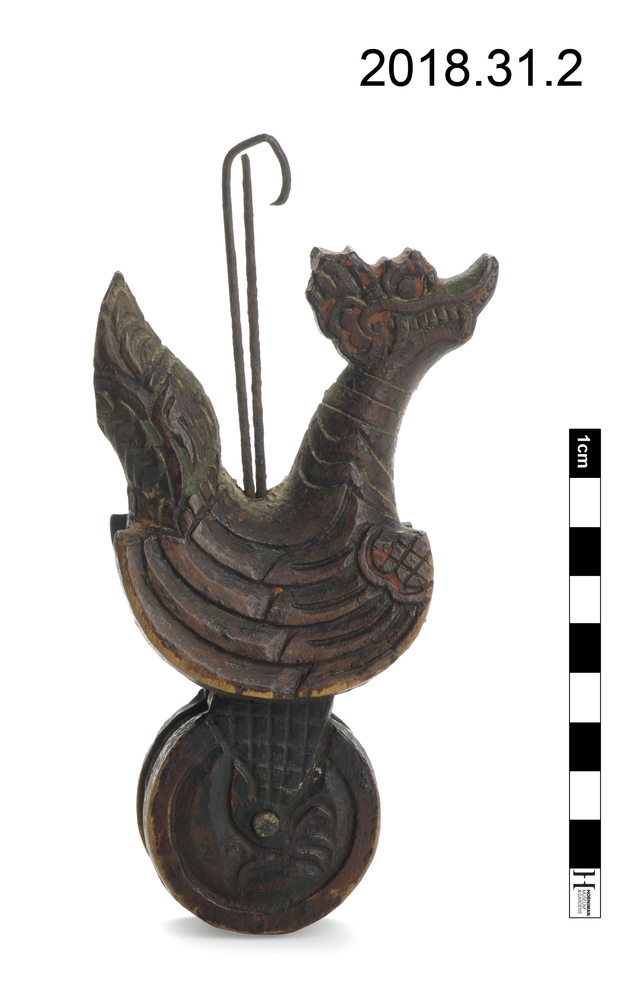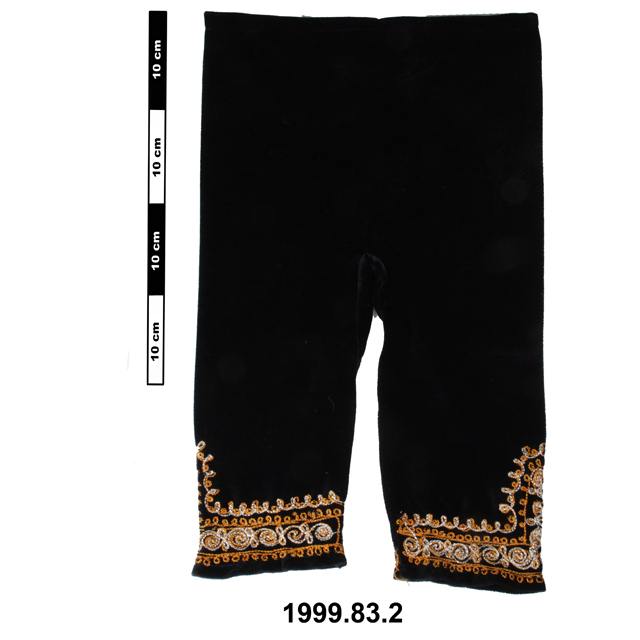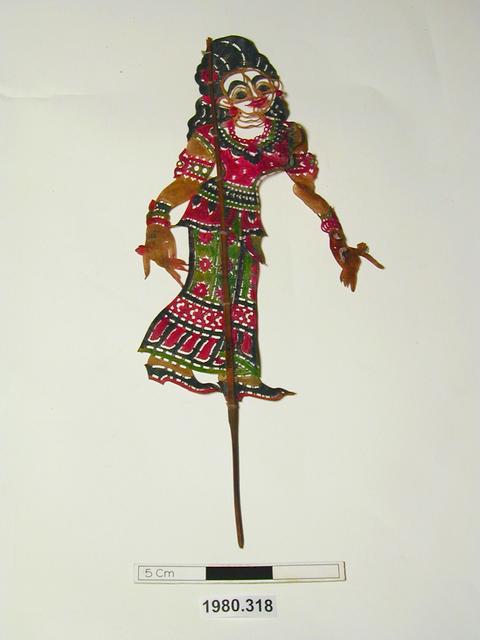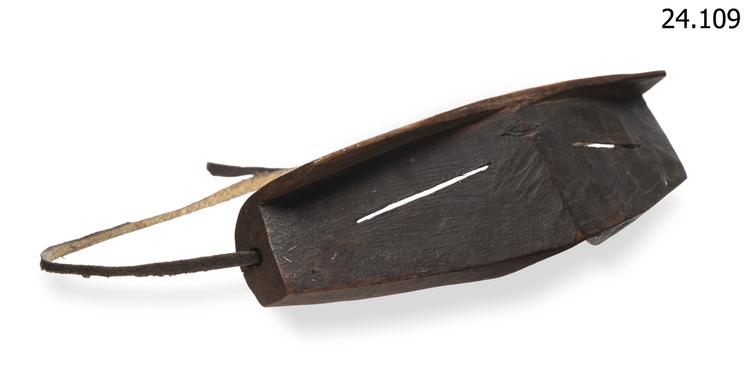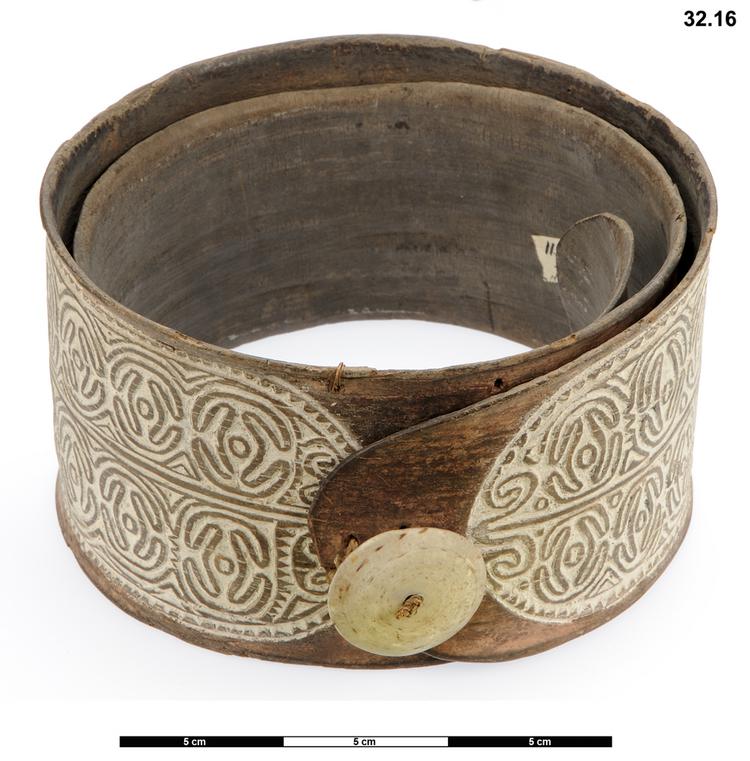
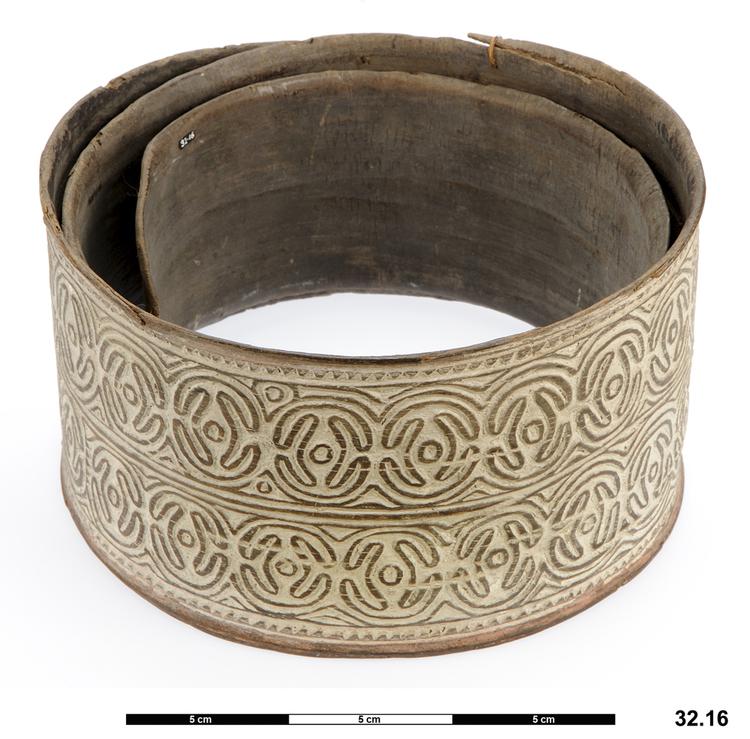
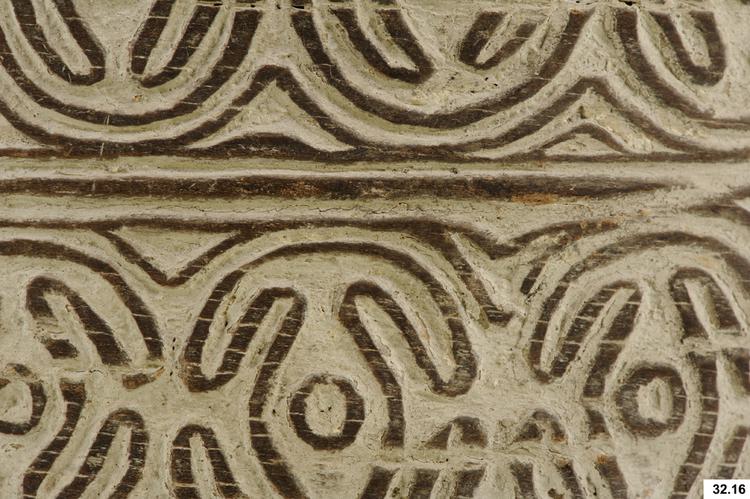
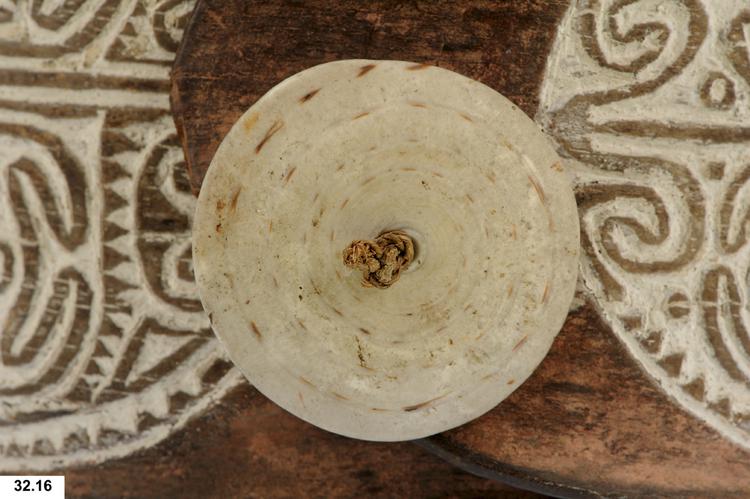
Belt made of bark, decorated with an incised geometrical pattern that has been filled with white pigment. A button of Conus shell is affixed to the front.
Bark Belt, Mafulu People, Uplands of Central Province, Southern Papua New Guinea The collector of this object, Robert Williamson, was the first anthropologist to record the culture of the Mafulu, staying with them throughout 1910, and publishing his account, The Mafulu, back in England in 1912. He sold an important collection of very early Mafulu objects to the Horniman in 1932, including this finely decorated bark belt. Once cut from the tree, the bark sheet was coiled up and submerged in water to separate the rough outer bark from the smooth inner layer used here. Fitted with a string to tie one layer to another, bark belts such as this were worn coiled twice around the belly. Such belts were worn in several parts of southern and south-western Papua New Guinea, but elsewhere they often feature representations of human figures and meandering lines; this Mafulu example is striking in its neat and regular geometric engraving. Belts of this style were worn only by men, while various other styles in cane and fibre were worn by women and men alike. Bark, pigment, Conus shell. Early 20th Century. Formerly in the private collection of Dr Robert Williamson.



